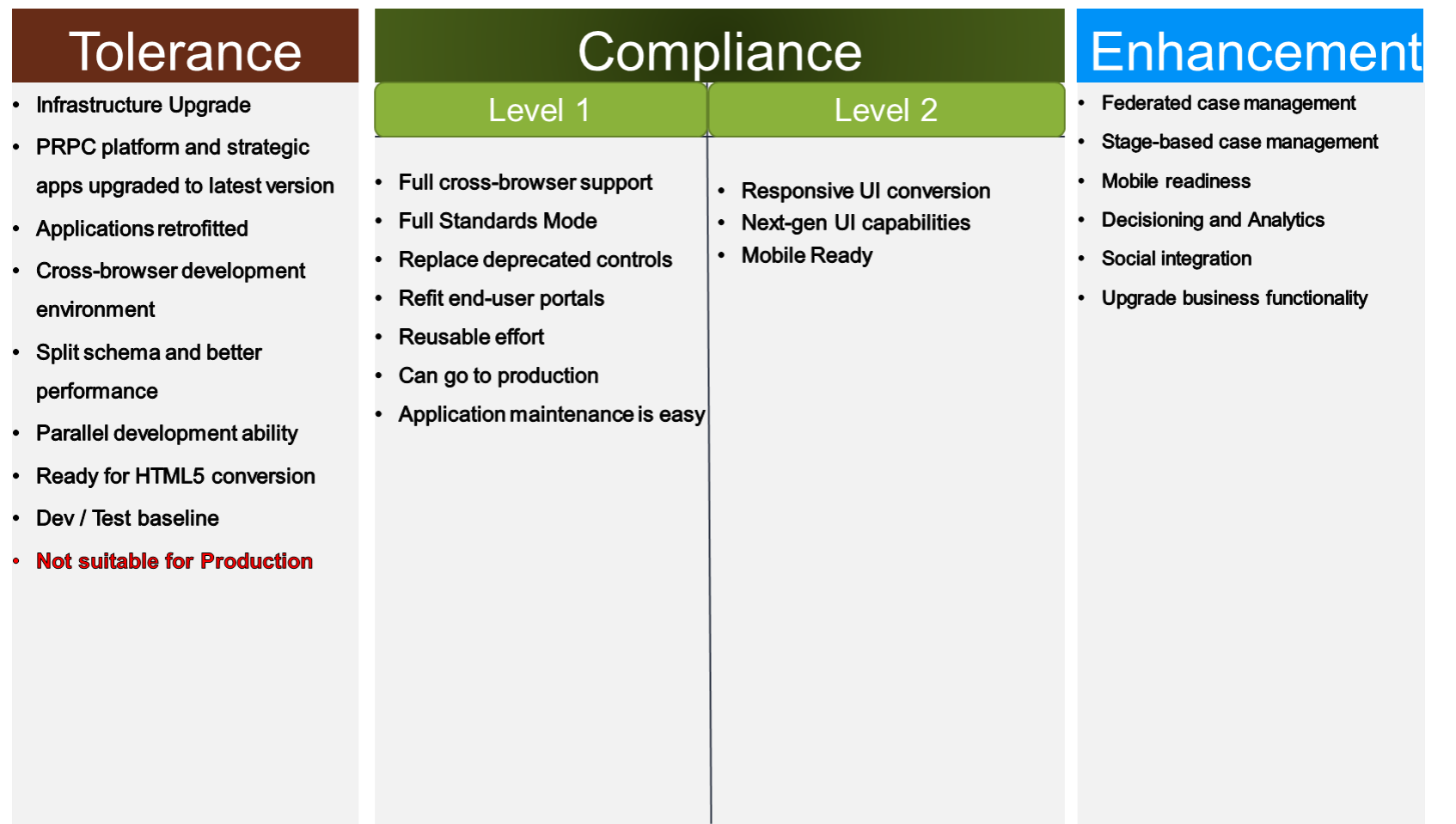Estimating the application upgrade effort
The amount of time and effort required to upgrade an application depends on a variety of factors that include guardrail compliance, the level of user interface customizations, custom code, the complexity of business processes, and other environment variables. These factors vary widely from project to project, making an upgrade estimate difficult. However, you can estimate the high-level effort based on two key factors: the type of upgrade and application size.
Selecting the type of upgrade
Your upgrade effort is dependent on the type of upgrade you choose. The following graphic summarizes the different types of upgrades. The Compliance upgrade is recommended for production environments.

For detailed information about the advantages of different types of upgrade, see Upgrade approaches for upgrading from PRPC to the Pega 7 Platform.
Determining the application size
Application size is based on the number of rules in the application:
- Small – 10,000 to 30,000 rules
- Medium – 30,000 to 70,000 rules
- Large – 70,000 to 120,000 rules
Estimating the upgrade effort by using reference data
Depending on the type of upgrade and the size of the application, you can calculate the high-level effort required for upgrading. Use the following reference matrices to determine the total required effort. These matrices are based on historic upgrade experience and provide a reference point to start your upgrade planning.
Upgrading from PRPC 5.x
When you upgrade from PRPC 5.x, if the ratio of default rules to custom rules is less than 35%, the rough effort required to complete your upgrade is provided in the following table.
| Upgrade type | Small (in person hours) | Medium (in person hours) | Large (in person hours) |
|---|---|---|---|
Level 1 | 2400 | 4200 | 7000 |
Level 2 | 2300 | 5200 | 8500 |
Upgrading from PRPC 6.x
When you upgrade from PRPC 6.x, if the ratio of default rules to custom rules is less than 20%, the rough effort required to complete your upgrade is provided in the following table.
Upgrade type | Small (in person hours) | Medium (in person hours) | Large (in person hours) |
|---|---|---|---|
Level 1 | 1800 | 3000 | 4000 |
Level 2 | 2500 | 4000 | 6000 |
Effort distribution
The usual effort distribution among development and testing activities during the upgrade project is provided in the following table.
Upgrade type | Development (% of total effort) | Testing (% of total effort) | System operations (% of total effort ) |
|---|---|---|---|
Level 1 | 45% | 45% | 10% |
Level 2 | 40% | 50% | 10% |
Next steps
For information about detailed upgrade assessments and other customized upgrade services, see Pega Upgrade Center.
